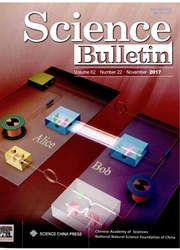

 中文摘要:
中文摘要:
因为 graphene 被发现,学习二维(2D ) 有原子厚度的材料成为了一个热点。准备不同 2D 材料,不同方法被摸索了例如机械脱落,化学蒸汽免职(CVD ) ,液体阶段脱落。这评论主要介绍了 sonication 液体阶段脱落,准备 2D 材料的一个有效方法。与机械脱落和 CVD 方法相比,液体阶段脱落方便、划算并且提供高产量。我们集中了于这个方法的理论、试验性的细节。这个方法从 graphene,转移金属 chalcogenides (TMD ) 的 h-BN 和黑磷 nanosheets 根据 2D 材料的发展被考察。我们讨论了包括的液体剥落 2D 材料的应用微 -- 并且 nanoelectrical 设备,光电的设备,和精力存储设备。
 英文摘要:
英文摘要:
Since graphene was discovered, the study of two-dimensional (2D) materials with atomic thickness has become a hot spot. To prepare different 2D materials, different methods have been groped, such as mechanical exfoliation, chemical vapor deposition (CVD), liquid-phase exfoliation. This review mainly introduced the sonication liquid-phase exfoliation, an effective method to prepare 2D materials. Compared with mechanical exfoliation and CVD methods, liquid-phase exfoliation is convenient and cost- effective and provides high yield. We focused on both theoretical and experimental details of this method. This method was reviewed according to the development of 2D materials from graphene, h-BN to transition metal chalcogenides (TMDs) and black phosphorus nanosheets. We discussed the applications of liquid-exfoliated 2D materials including micro- and nanoelectrical devices, photoelectric devices, and energy storage devices.
 同期刊论文项目
同期刊论文项目
 同项目期刊论文
同项目期刊论文
 ZnO nanowire lines and bundles: Template-deformation-guided alignment for patterned field-electron e
ZnO nanowire lines and bundles: Template-deformation-guided alignment for patterned field-electron e The impact of Mg content on the structural, electrical and optical properties of MgZnO alloys: A fir
The impact of Mg content on the structural, electrical and optical properties of MgZnO alloys: A fir Forchlorfenuron detection based on its inhibitory effect towards catalase immobilized on boron nitri
Forchlorfenuron detection based on its inhibitory effect towards catalase immobilized on boron nitri Superstable transparent conductive Cu@Cu4Ni nanowire elastomer composites against oxidation, bending
Superstable transparent conductive Cu@Cu4Ni nanowire elastomer composites against oxidation, bending Multiexciton generation in semiconductor nanocrystals: a potential avenue toward efficient solar cel
Multiexciton generation in semiconductor nanocrystals: a potential avenue toward efficient solar cel All-InorganicHalide Perovskites as A New Class of Nonlinear Semiconductors with Strong Two-photonAbs
All-InorganicHalide Perovskites as A New Class of Nonlinear Semiconductors with Strong Two-photonAbs MonolayerMoS2-Graphene Hybrid Aerogels with Controllable Porosity for Lithium-IonBatteries with High
MonolayerMoS2-Graphene Hybrid Aerogels with Controllable Porosity for Lithium-IonBatteries with High Intercrossed Carbon Nanorings with Pure Surface States as Low-Cost and Environment-Friendly Phosphor
Intercrossed Carbon Nanorings with Pure Surface States as Low-Cost and Environment-Friendly Phosphor Mesoporous Alumina Microfibers In Situ Transformation from AACH Fibers and the Adsorption Performanc
Mesoporous Alumina Microfibers In Situ Transformation from AACH Fibers and the Adsorption Performanc A Targeted“Capture” and “Removal” Scavenger toward Multiple Pollutants for WaterRemediation Based on
A Targeted“Capture” and “Removal” Scavenger toward Multiple Pollutants for WaterRemediation Based on Nonlinear absorption and low-threshold multi-photon pumped stimulated emission from all-inorganic pe
Nonlinear absorption and low-threshold multi-photon pumped stimulated emission from all-inorganic pe 3D white graphene foam scavengers: vesicant-assisted foaming boosts the gram-level yield and forms h
3D white graphene foam scavengers: vesicant-assisted foaming boosts the gram-level yield and forms h Integrating large specific surface area and high conductivity in hydrogenated NiCo2O4 double-shell h
Integrating large specific surface area and high conductivity in hydrogenated NiCo2O4 double-shell h Nanocrystal-ink-printed transparent electrodes for flexible, stretchable and wearable smart devices:
Nanocrystal-ink-printed transparent electrodes for flexible, stretchable and wearable smart devices: Engineering surface states of carbon dots to achieve controllable luminescence for solid-luminescent
Engineering surface states of carbon dots to achieve controllable luminescence for solid-luminescent Atomically thin arsenene and antimonene: semimetal-semiconductor and indirect-direct band-gap transi
Atomically thin arsenene and antimonene: semimetal-semiconductor and indirect-direct band-gap transi A general one-pot strategy for the synthesis of high-performance transparent-conducting-oxide nanocr
A general one-pot strategy for the synthesis of high-performance transparent-conducting-oxide nanocr 期刊信息
期刊信息
